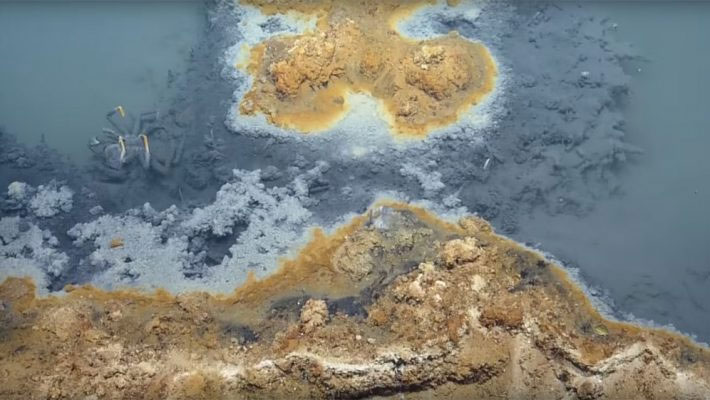The lake area under the ocean carries deadly toxins
The water in the lake in the Gulf of Mexico is 5 times more salty than the surrounding water, containing a lot of metal and hydrogen sulphide which can be fatal when swimming here.
Erik Cordes, associate professor of biology at Temple University, USA, published the results of the "lake zone" study that could kill the Gulf of Mexico seabed in the journal Oceanography, Science Alert on October 27.
"This is the most surprising thing in the deep sea, when you dive to the bottom of the ocean and see a lake or a flowing river. It makes you feel like you're in another world," Cordes replied to Seeker. .
According to scientists, during the Jurassic period, 200-145.5 million years ago, there was a shallow sea that existed in the location of today's Gulf of Mexico. As tectonic plates continue to move, this sea is separated from the rest of the ocean. The temperature was so hot that the isolated ocean began to evaporate, leaving a large amount of salt.

The lake area under the Gulf of Mexico carries many toxins that can kill humans and animals.(Photo: EVNautinus).
It is then submerged and once again connected to the world's oceans. However, the kilometer thick salt layer was covered by insoluble sediments. While the weight of seawater compresses these salts, a portion of salt is pushed back up to the seabed through a process called "salt tectonics" . Salt then comes into contact with seawater, dissolving and forming salt water lying on the seabed.
The measurement results show that water in the "undersea lake" in the Gulf of Mexico is five times more salty than the surrounding water. In addition, it contains high levels of toxins of metal gas and hydrogen sulphide, so it cannot mix with the surrounding waters.
The concentration of toxins here can kill humans and animals when swimming in. Only bacteria, worms and shrimps can live in this environment.
This is an interesting research site for scientists. They can learn how some creatures survive in harsh living conditions here.
"A lot of people consider places with harsh living conditions on Earth to be the model for what we can find when we go to another planet," Cordes said.
- Detecting underground lake in Darfur
- Air pollution is more harmful through the skin through the airway
- There has been a new model of the mysterious Vostok lake
- China successfully saved the largest saltwater lake
- Only standing water areas can be deadly
- Lake Namtso (Namu) - Lake in the sky
- The 5 most dangerous types of poison in the world
- The ocean is vast but most of the area has been invaded by humans.
- Ba Be Lake becomes the new Ramsar Area of Vietnam
- Lake asphalt - Natural asphalt workshop
- Simple signs that help identify your body are accumulating toxins
- 7 small creatures but deadly
 Is the magnetic North Pole shift dangerous to humanity?
Is the magnetic North Pole shift dangerous to humanity? Washington legalizes the recycling of human bodies into fertilizer
Washington legalizes the recycling of human bodies into fertilizer Lightning stone - the mysterious guest
Lightning stone - the mysterious guest Stunned by the mysterious sunset, strange appearance
Stunned by the mysterious sunset, strange appearance